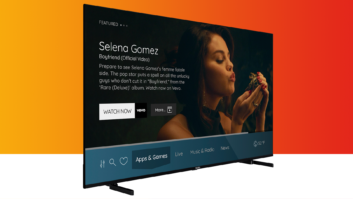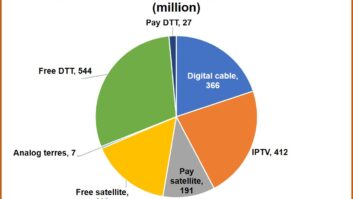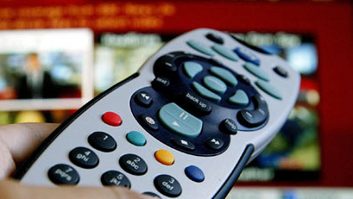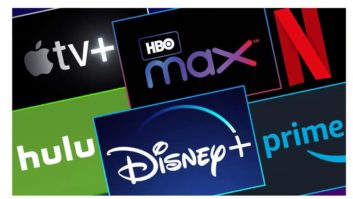In 2004, American psychologist, Barry Schwartz, published a book called The Paradox of Choice – Why More Is Less, in which he discusses how an abundance of consumer choice has a negative impact on mental wellbeing. His research suggests that increasing our options doesn’t necessarily correlate with greater happiness; “Learning to choose is hard. Learning to choose well is harder. And learning to choose well in a world of unlimited possibilities is harder still, perhaps too hard.”
Since the release of Schwartz’s book possibilities have expanded immeasurably, as choices have evolved from physical consumer goods to also include intangible experiences such as travel, dating, social media and entertainment. The more options we have, the more we struggle in the decision-making process. On the surface it would seem that the best way to manage this is learning to live with less – wouldn’t we all be better off returning to the days of a handful of terrestrial channels? Unsurprisingly, I’m not advocating limiting the content that’s available, just suggesting we improve the selection process for customers.
Choice Overload
In a study from Kellogg School of Management at Northwestern University, marketing professors found that “choice-set complexity” played a significant role in how overwhelmed consumers feel when making decisions; “Complexity is not so much about the absolute number of options but rather how complex choosing among them is.” They also concluded that creating an optimal experience is linked to simplifying the process, rather than reducing the number of options.
OTT and VoD services have created an explosion of entertainment choice. To fully understand their users, virtual platforms need to consider the consumer experience as if it were taking place in the physical world. A simple trip to the supermarket to buy ketchup, ends with the customer standing bewildered in front of hundreds of condiment bottles. Then a fellow shopper wanders past and reminds them of several other shops nearby that also have exactly what they need.
As competition increases so do the viewing options for users. The surge in suppliers means that over time most consumers have built up multiple subscriptions, with a well-documented increase in this trend during lockdown. Viewers now find themselves constantly navigating between services, making it increasingly challenging to find what they’re after. Ironically, services designed to rationalise the way we consume media are making it even more complicated as most of them operate in silos.
My Brain has too many tabs open
In all areas of their digital experience consumers are streamlining the way they interact with services. Research from Global Web Index showed that 51 per cent of participants opted for a “digital diet” rather than committing to a full “digital detox”. Instead of escaping from the online world altogether, users are cutting back in order to develop a healthier relationship with technology.
The same report revealed that 37 per cent of participants had recently deleted an app or programme from their connected devices. Simplifying has become a way of life, and many consumers are in the mindset of regularly clearing out their homes as well as their phones. Subscriptions are also on the chopping block and the ongoing challenge for service providers is to hold viewer’s attention and loyalty in an increasingly crowded marketplace.
Finding a balance
As a society we’re perpetually exhausted. More connectivity means longer working hours and higher expectations of productivity levels. Factor in the unprecedented number of people working remotely due to social distancing requirements and achieving a work / life balance is harder than ever. As the boundaries between home and office blur, our downtime has become a precious commodity and viewers need as few barriers as possible to enjoy it.
Last year a survey by Study Finds revealed that it took only 22 seconds for participants to become frustrated if a series or movie didn’t start streaming immediately. There’s no doubt that audiences are becoming more impatient, so if providers increase content choices, they must also facilitate ease of use within their service.
While most users are happy to engage with the subscription model, there’s an expectation that what is presented will clarify their viewing choices. Audiences are tired of navigating between multiple services to find what they are looking for. The current approach is not only time consuming, it’s also difficult for the user to compare content across different providers. This is likely to result in them staying within one service and settling for the options in front of them, rather than utilising the entire library.
That might seem like a win for the individual platform but in reality, it hurts the subscription model. The viewer experience becomes fractured, users associate being signed up to numerous subscriptions with a fear of missing out because they won’t find the right content easily. As a result, it is less likely they will see the value of keeping accounts with multiple OTT and VoD platforms. To prevent churn some forward thinking Pay TV operators are becoming content aggregators. Combining their own content with third-party apps in a bundle that offers viewers the best of everything.
From a consumer’s point of view, they want to perform one simple action – watch engaging content. Audiences need to access content in multiple ways, depending on different viewing scenarios. A viewer’s thought process isn’t linear, and after years of searching online they’ve grown accustomed to flexibility. Aggregation should be a parallel strategy to standalone app consumption. Offering consumers different paths, means they can make their journey efficient or take the scenic route, depending on their mood. Sometimes viewers will want to browse and compare content, other times they’ll need to locate their favourite show as quickly as possible, without becoming distracted by alternative options.
UX steals the content crown
Customers now have an expectation of excellent content as standard, but content can’t be king if the user is unable to locate it. The current method of finding content isn’t intuitive. In order to meet consumer expectations, pay-TV operators need to evolve and connect more effectively with their audience. By creating a customisable interface with content metadata, they can form a bridge between services.
When the cognitive psychologist and electrical engineer Don Norman, created the term “User Experience”, he put the user’s needs at the forefront of the design process. UX is different to UI in that it focuses on the entire relationship a consumer has with the product or service, not just the process of interacting with an interface. Awkward navigation is the definition of a bad user experience. If consumers feel like a provider is making their life easier, they will naturally reward them with repeat visits.
Last year, a study by PwC found that user experience was the key driver for consumer loyalty. When asked to rank the top three reasons for favouring a service, ease of use and reliability took the top spots.
Pay-TV operators need to place themselves at the forefront of customers’ minds. Enabling them to scroll through content intuitively, based on their interests, as well as providing user-friendly access to all content. A customised user experience, available via a single sign-in, keeps a service simple and memorable. If pay-TV operators can act as the host of a gathering of third party apps, users will always remember where they went for an amazing get-together.






